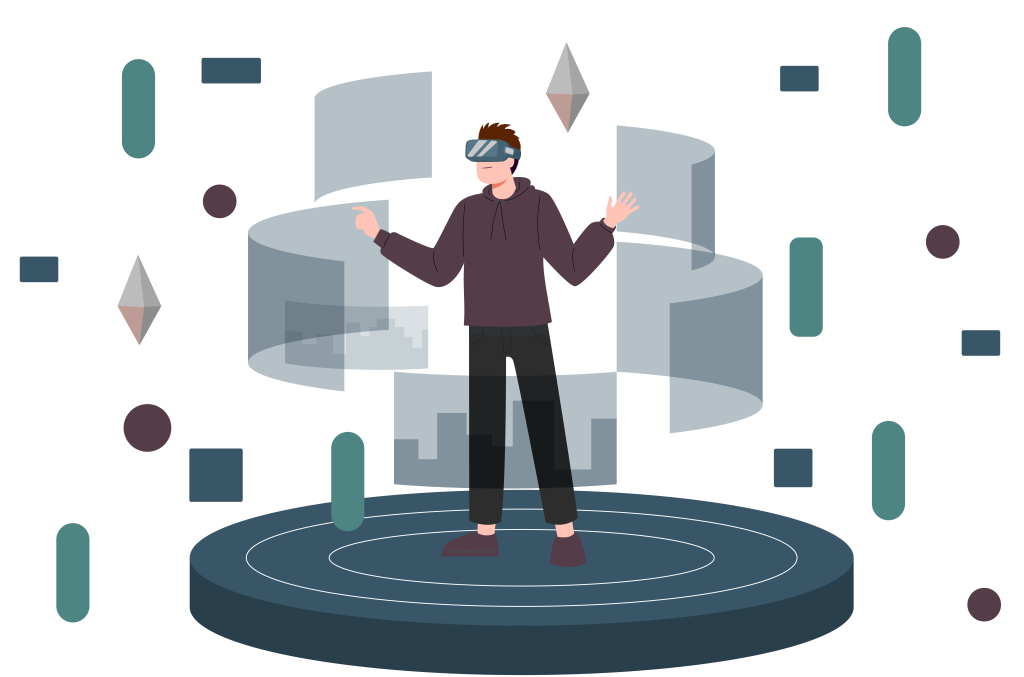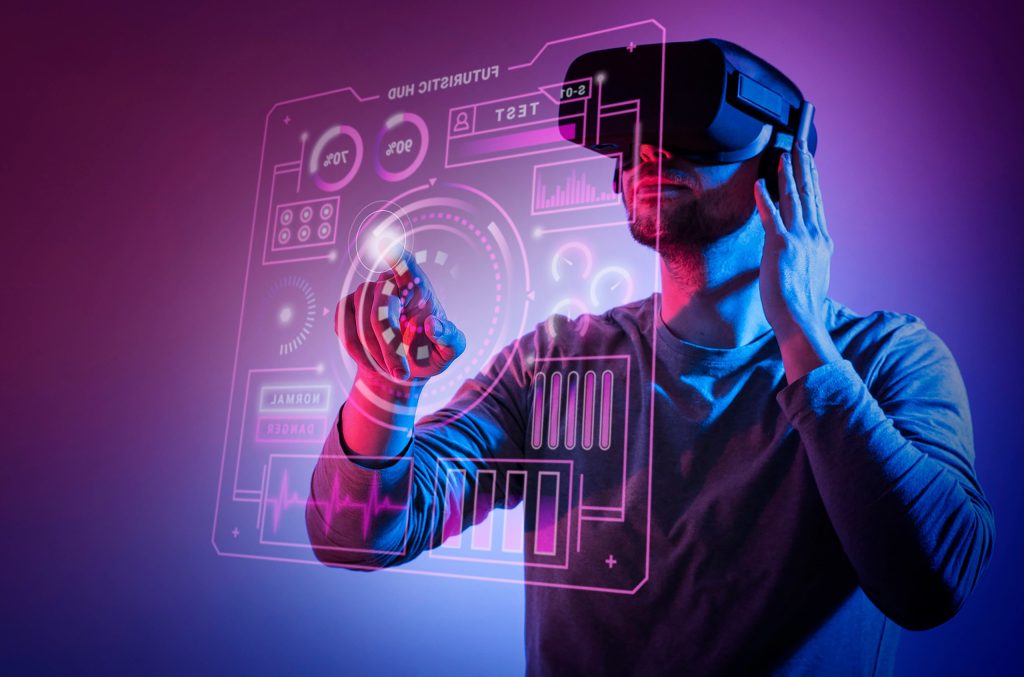You’ve probably heard about the metaverse before. In recent months it’s been a hot topic in the news ever since Facebook changed their company name to Meta and signaled their intent to invest in the future of the metaverse fully. But what exactly is the metaverse? Why should designers be excited about the metaverse? And which areas of the metaverse are worth paying attention to in the next few years? In this blog, we aim to answer all these questions and more.
What is the Metaverse?
The metaverse is a set of interconnected digital spaces that allow users to do a variety of things that would be impossible to do in the physical world. It is essentially a parallel virtual world. You can socialize, complete tasks, play games, and learn through virtual activities within this world. When you’re inside the metaverse, you will have an avatar or virtual identity that is customizable.
The origins of the metaverse can be found in science fiction. Still, thanks to the creativity and innovation of designers and developers worldwide, it is no longer a fictional concept. Today, we are closer than ever to bringing the metaverse into everyday life. The metaverse has tremendous potential to be a new arena for UX and design through virtual reality, augmented reality, and extended reality.

Designing for the Metaverse
So, what role can designers play as the metaverse grows in popularity and compatibility? Designers will need to shift their mindset, methods, and skills to design various experiences that work in a virtual context. Maybe this will require them to stop thinking about “users” and to start thinking about the people that interact with their designs as “players.”
Designing for the metaverse won’t be easy at first. Many designers will need to expand their skillset and learn new disciplines. These virtual worlds could possibly function like mini-societies which will mean that designers will have to expand their knowledge of economics, psychology, and sociology.
We think some of the key elements designers should consider when thinking about the metaverse include:
- Storytelling is at the forefront of designs.
- A focus on field research and understanding a complex array of perspectives.
- Learning 3D tools and making the most of completely adaptable virtual worlds.
- The interconnection of designs. Your designs will no longer exist in isolation but will instead be part of a web of connected designs and experiences.

Which specifications are unique to Metaverse design?
There will be several design areas that will be uniquely challenging and effective within the metaverse. Let’s take a look at a few of the key specifications:
- Animation
- Animations will have the potential to move anywhere in the metaverse, but designers will need to exercise restraint to ensure their energies are natural to the human eye.
- Audio
- Spatial audio is reactive to the player’s position in the virtual space. The closer they are to an audible object, the higher the audio volume should be.
- Ambient audio plays throughout the experience to convey the mood and atmosphere. It should enhance rather than distract.
- Audio feedback that is prompted by sound triggers will help immerse users in the environment and ensure the metaverse sounds and feels like a real space.
- Avatar
- How should the user be represented in the virtual space? There is an opportunity for plenty of cosmetic creativity here, but designers must also be aware of how representation impacts their presence in the metaverse.
- Navigation
- Camera and Controls: What kind of perspective and camera angles will the metaverse support? (First Person, Third Person, or a 2D overworld map) And how will the user control the camera and its movement within the metaverse environment? Intuitive controls are important to the initial and overall experience.
The benefits
Why will the metaverse succeed? To understand why the metaverse could be a big deal, let’s take a look at some of the key benefits.
- The Metaverse in the workplace
For workplaces, the metaverse presents enormous opportunities. VR technology will allow users to share ideas in virtual office spaces. In the current remote working climate, the metaverse could enable you to create authentic “in-person” experiences without coming to work physically. For designers, you will be able to create in a virtual space reducing costs and increasing the ability to be creative and collaborate.
- The Metaverse in entertainment
VR games and experiences have already been around for a while. And the metaverse has the potential to take this kind of entertainment to the next level. You’ll be able to immerse yourself in films, games and music concerts.
- Metaverse practicality
The metaverse has thousands of practical applications. For example, VR platforms are used in exposure therapy to confront their fears safely. Equally, the metaverse can be used in sport and combat training to simulate environments and reduce the risk of injury. For designers, the metaverse can be used to visualize, test, and compare designers in a way that is inexpensive, accessible, and enjoyable.
Your Metaverse journey
There is enormous potential for exciting innovation and creativity in the metaverse world. Today’s designers can be at the forefront of this change and should look to make the most of the metaverse to create, iterate, experiment and excel.
To learn more about how you can utilize the metaverse with your designs and fast-track your digital transformation, please get in touch with our UX experts at Radiant Digital.


